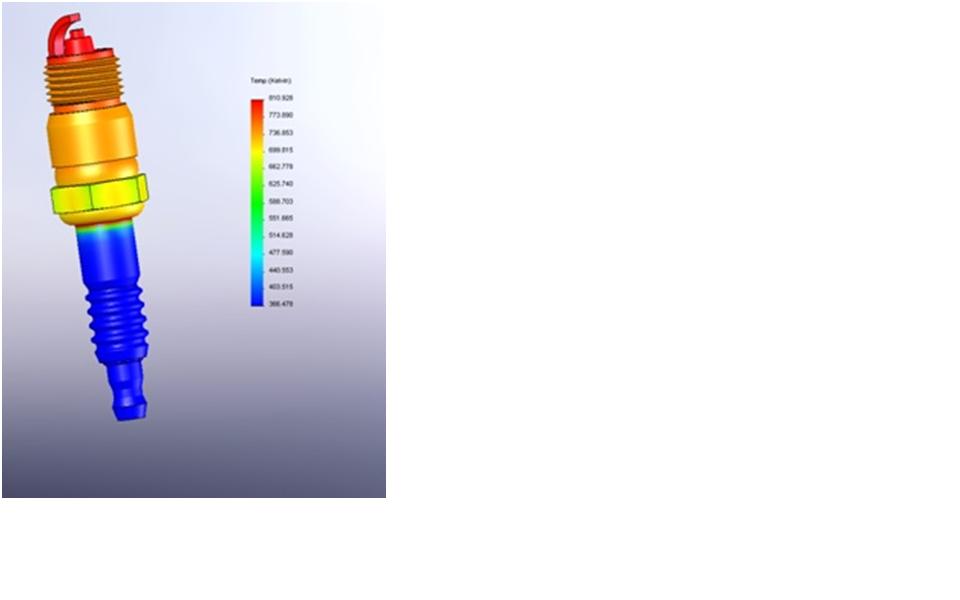Temperature Analysis
Thermal analysis helps users account for temperature change in the environment. Typically there are two types of thermal analysis
(a) Static -boundary conditions do not change with respect to space and time. In a static thermal test users are solving for equilibrium given a set of environment conditions.
(b) Transient – boundary conditions change with respect to space and time. In a transient test users are solving conditions that a varying e.g power, temperature etc.
An easy way to differentiate would be using a practical example. Let's say you are interested in analyzing a spark plug. This test can be done in two ways (a) solve for temperature distribution in the spark plug in usage a.k.a static (b) solve for temperature distribution in the spark plug a minute after the engine has started a.k.a transient. We will solve for both these cases and understand differences between static and transient analysis.
Material Properties : To conduct thermal analysis , users need to know : thermal conductivity, density and specific heat for different components involved.
There are three mechanisms for Heat Transfer : Conduction, Convection and Radiation
Conduction is the heat transfer mechanism in which thermal energy transfers from one point to another through the interaction between the atoms or molecules of the matter. Conduction occurs in solids, liquids, and gasses.
Convection is the heat transfer mode in which heat transfers between a solid face and an adjacent moving fluid (or gas).
Thermal Radiation is the thermal energy emitted by bodies in the form of electromagnetic waves because of their temperature. All bodies with temperatures above the absolute zero emit thermal energy. Because electromagnetic waves travel in vacuum, no medium is necessary for radiation to take place.
In the case of spark plug, let us say we have information on average temperature around the combustion chamber. Spark Plug is surrounded by air and hence loses heat at a constant rate. We will assume the (convective coefficient) rate at which spark plug is being cooled by surrounding air. We are looking for operating temperature of spark plug. In this case, the temperature in combustion chamber and air convection cooling rate act as inputs, the output would be temperature distribution pattern in the plug. An important point to note: User has to mention convection co-efficient for static thermal tests. Can you guess why??? The software is solving for equilibrium between heat input and constant cooling. This equilibrium will never be reached unless we provide a cooling rate. ….

For transient analysis; let us say we know the rise in heat power as the engine is ramping up for the first one minute. This change in power will act as an input. For transient analysis it is not necessary to mention convection coefficient, but it is required to mention an initial temperature or starting point for calculations.

Using thermal simulation users can quickly account for temperature change. But this explains only one part of the story…predicting temperature change under applied heat load. What about the structural requirements under this applied load?? Once temperatures are calculated in thermal analysis users can use these values as a thermal load in structural simulation. Thus calculating deformation, factor of safety due to temperature change. Thus giving a complete picture and help users understand complete component behavior under thermal loads.
Rajat Trehan
Product Manager – Design Validation
Computer Aided Technology Inc.

 Blog
Blog